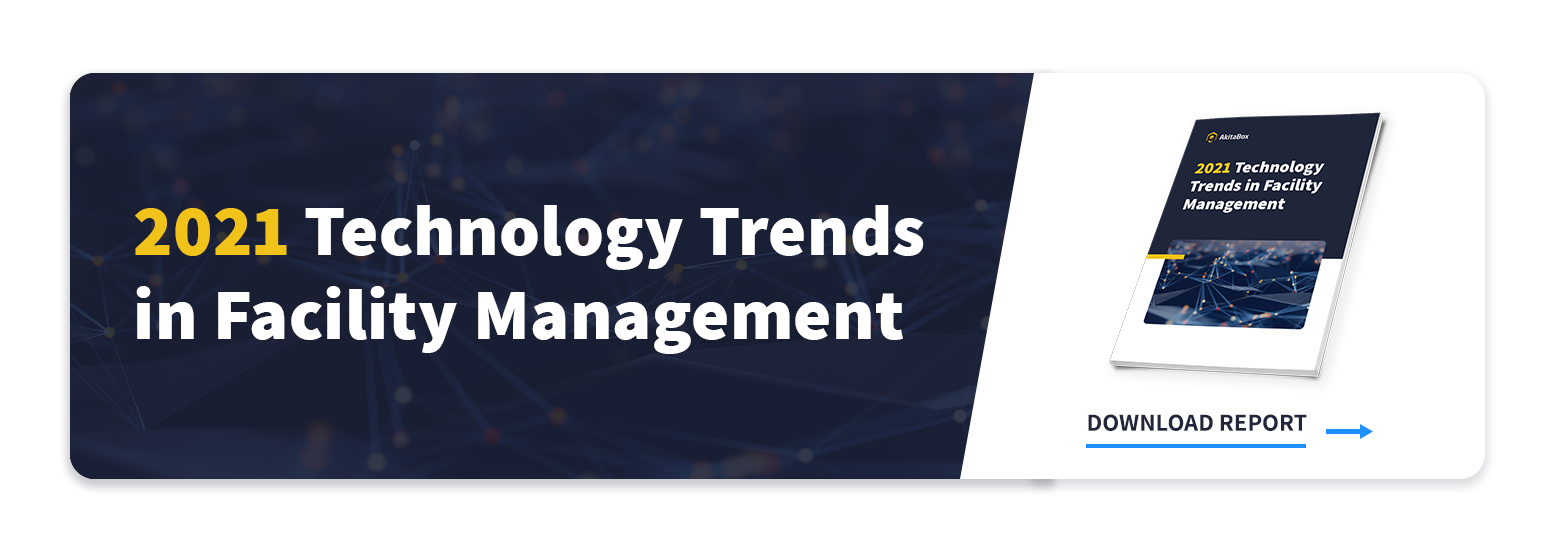Internet of things (IoT) has been a hot topic, but, as futuristic as it sounds, facility managers have been using this tech for years. It’s as simple as putting a sensor on a piece of equipment and connecting the sensor to a software notification system. But many facility managers still have questions about how this technology will truly work in their buildings.
We rounded up frequent questions facility managers have about IoT and provided answers.
Are IoT sensors new?
Nope – building sensors have been around for decades. The first sensors were introduced in the late 1960s, and you’ve already been using sensors in motion-activated lights, automatic doors, fire detectors, thermostats and other equipment. The reason asset and space sensors have come up in the industry is because they’re more affordable, user-friendly and wireless. Plus, they’re the backbone of IoT.
Will sensors work with the different makes and models of assets I have?
Third-party asset sensors are available, but there isn’t a clear, independent industry leader in the sensor game. Most large companies sell their own sensors, sensor interfaces and assets, which means assets and sensors from different companies won’t all work in one interface. This might not be a problem for large-budget facility teams that can afford multiple systems, but smaller facilities will either have to work directly with one of the smaller suppliers to develop a system or wait a couple years until wireless sensors are even more accessible.
Can I tie IoT sensors to my CMMS or FMS?
Not yet. The goal with IoT is to collect data through many points and have it filtered through one source, but we’re not quite there. Eventually, sensors will be ready to connect with your facility management software (FMS), but, since large companies currently dominate the market with their proprietary systems, third-party sensor companies haven’t had a chance to introduce sensor and system integration.
What kind of sensors are available?
There are two major types of IoT sensors in facilities management:
Temperature and Humidity Sensors: These devices help track temperature and humidity changes to help keep your occupants more comfortable without giving them control of the thermostat.
Machine Listening/Vibration Detection Sensors: These sensors are put on larger mechanical assets so your facility team can be alerted of a failure or performance change. They also record all the data collected, so you can go back and review it. For instance, if there are sensors on all your pumps and you notice just before a pump died that it made a strange noise, you can monitor the other pumps for this noise so you can anticipate when a future replacement is needed.
Should I use sensors in my facility?
This is a trick question, because it all depends on your facility. If you’re the facility manager of a small school on a shoestring budget, the cost of sensors probably won’t offset the cost of the new system fast enough; instead, you should look at a better FMS. On the other hand, if you’re a hospital facilities manager, sensors could help you develop a prescriptive maintenance plan to reduce down time in operating rooms or other critical spaces where occupant safety relies on temperature, humidity and asset control and functionality.
Sensors could improve your facility management approach if:
- Occupant health and safety relies on temperature, humidity and asset control and functionality
- Machine and asset uptime is directly linked to profit
- You have multiple assets with the same make and model, so you can predict functionality
- A robust FMS has been implemented, so work orders can be issued quickly
What’s the easiest way to start using IoT sensors at my facility?
An easy, low cost way to start using IoT in facilities management is with occupancy sensors. Depending on the system you choose, the sensor can trigger the lights, thermostat or fan, and also monitor how often the space is being used. For instance, if an office space is primarily used Monday through Friday, perhaps the thermostat can be adjusted to use less energy during the weekend. Not only can these occupancy sensors help you cut down on your electric bill, but they’re easy to find.
Sensors have been used in facility management for years, so, while the term IoT might be new to you, the concept is not. As technology continues to evolve, sensors will continue to become more accessible and affordable.
Check out our guide to building technology trends to learn more about all things FM tech!
